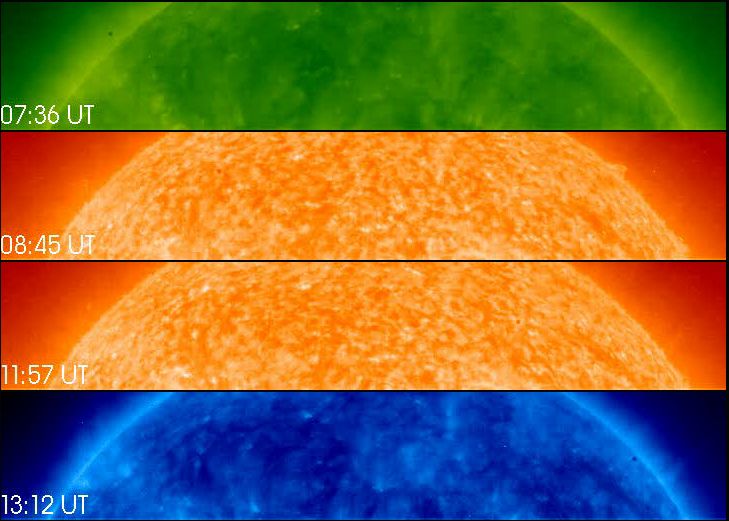
|
Explanation: Can you spot the planet? The diminutive disk of Mercury, the solar system's innermost planet, spent about five hours crossing in front of the enormous solar disk on 2003 May 7, as viewed from the general vicinity of planet Earth. The Sun was above the horizon during the entire transit for observers in Europe, Africa, Asia, or Australia, and the horizon was certainly no problem for the sun-staring SOHO spacecraft. Seen as a dark spot, Mercury progresses from left to right (top panel to bottom) in these four images from SOHO's extreme ultraviolet camera. The panels' false-colors correspond to different wavelengths in the extreme ultraviolet which highlight regions above the Sun's visible surface. This was the first of 14 transits of Mercury which will occur during the 21st century, but the next similar event will be a much more rare transit of Venus this coming Tuesday. Need help spotting Mercury? Just click on the picture.
News flash: Venus
to cross the Sun on Tuesday
|
January February March April May June July August September October November December |
| ||||||||||||||||||||||||||||||||||||||||||||||||
NASA Web Site Statements, Warnings, and Disclaimers
NASA Official: Jay Norris. Specific rights apply.
A service of: LHEA at NASA / GSFC
& Michigan Tech. U.
Based on Astronomy Picture
Of the Day
Publications with keywords: Mercury - transit - Sun
Publications with words: Mercury - transit - Sun
See also:
- APOD: 2025 December 7 Á The Sun and Its Missing Colors
- APOD: 2025 May 21 Á International Space Station Crosses the Sun
- MESSENGER s Last Day on Mercury
- APOD: 2025 March 16 Á Venus and the Triply Ultraviolet Sun
- APOD: 2024 September 16 Á Mercurys Vivaldi Crater from BepiColombo
- APOD: 2024 September 2 Á A Triangular Prominence Hovers Over the Sun
- APOD: 2024 August 18 Á A Solar Prominence Eruption from SDO
